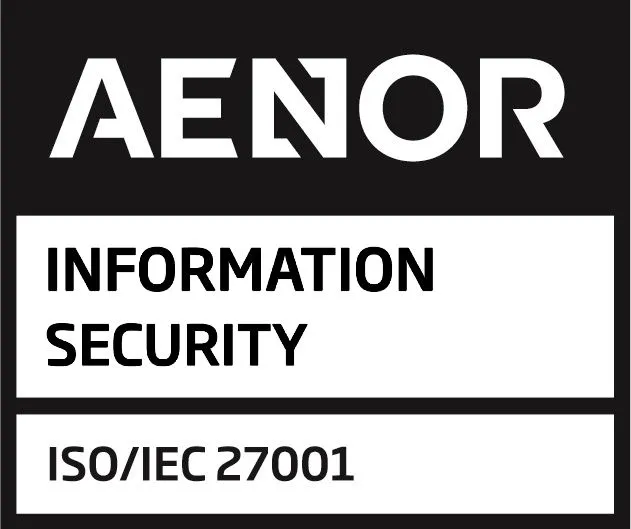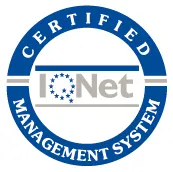
Do you know how your employees really feel? Employee surveys are one of the best tools for measuring employee satisfaction, identifying problems early and making data-driven decisions. But to be effective, they must be well designed, contain appropriate questions and have a tool that makes them easy to use and analyse.
Table of Contents
Companies that apply employee surveys strategically achieve clear benefits: employees who feel more listened to, and also because of this, feel more engaged, leading to lower turnover and a stronger organisational culture.
In this article, we will explore the different types of surveys you can use, the most appropriate questions to ask and how to analyse the results and turn them into concrete improvements for your team and your company.
What kind of employee survey does your company need?
For every need, there are different types of surveys that can help you collect valuable data and make strategic decisions. Let’s look at the options:
- Engagement survey: Assesses employees’ level of motivation and emotional connection to the company. It also includes assessment of rational factors such as working conditions, development opportunities and resources. Helps identify factors that influence productivity and sense of belonging.
- Job satisfaction survey: Analyses how comfortable employees feel with their job, the working environment, benefits, and opportunities for professional growth within the organisation and other aspects related to their well-being within the company.
- Organisational climate survey: Measures the company’s strengths and areas for improvement, leadership, internal communication and employees’ perception of the company’s culture. It helps to detect problems before they affect performance and is usually conducted on a semi-annual or annual basis.
- Well-being and mental health survey: Assesses the impact of work on employees’ physical and emotional well-being. Helps improve initiatives such as the wellness programme and work-life balance.
- Pulse survey: These are short, frequent surveys that provide real-time information on the mood of the team. They are ideal for detecting specific issues that the company wants to know about and act quickly.
- Diversity, Equity and Inclusion (DEI) survey: Determines whether all employees feel valued and treated fairly and detects possible biases or barriers. It is handy in companies with diverse teams or expanding internationally. Its results are key to strengthening organisational culture, ensuring equal opportunities, and, if positive, can be a good lure to attract talent.
- Onboarding survey: ideal for the employee’s onboarding stage. Ideally applied after the employee’s first week. It is a way to measure ‘first impressions’ and to have time to react in time to prevent a bad impression or failure from being reinforced in the new employee’s mind.
- Exit survey: This is applied when an employee leaves the company and helps to identify the reasons for leaving. With this information, the company can adjust strategies to retain the best talent.
- Employee recommendation survey (eNPS): The eNPS can also measure employee engagement and is a single question about whether they would recommend the company as a place to work. It is easy to administer and can be combined with other surveys. A high eNPS can give you signals that your own employees are perfect allies in attracting good candidates for your vacancies.
Each survey has its own ideal moment or overall objective. What is important is that they are an active listening mechanism to accompany the employee journey within the company.
Want to design effective employee surveys? Find out how Vip Connect can help you customise them and optimise your employees’ experience.
Key questions for an effective survey
The success of a employee survey depends not only on the type of survey, but also on the right questions, which should be clear, relevant and generate actionable responses. Here are some examples of questions that should be included in every survey.
Questions to measure commitment and motivation
Employee engagement is closely linked to employee retention. With a survey, you can predict whether the employee is loyal or at risk of looking for other opportunities. To do this, you can ask:
- Do you feel motivated in your day-to-day work?
- Do you feel that your work has a clear purpose?
- Do you feel that you receive recognition for your efforts?
- Do you identify with the values of the organisation?
Questions on leadership and organisational culture
Knowing their perception of leadership in the company can be an indication of how they experience the impact on their perception of the work environment. You can ask:
- Do you feel that communication with leaders is transparent?
- Do you feel supported by your management team?
- Do you trust the company’s leadership?
- Do you think the work environment fosters respect and collaboration?
Questions on reconciliation of work and family life
Work-life balance is key to an employee’s wellbeing, and is closely related to their productivity and intention to stay with the company. Example questions:
- Can you balance your work and personal responsibilities?
- Do you have flexible working hours?
- Do you think your work may be affecting your mental health or stress levels?
Questions on equity and diversity
Feeling that you work in an inclusive environment not only improves engagement, but also impacts on productivity, work climate and employee and team well-being. Some questions you can ask:
- Do you feel that there are equal opportunities for your professional development?
- Do you feel that the company encourages diversity?
- Have you perceived or experienced any situation of differential treatment due to discrimination?
- How do you value the organisation’s efforts to ensure an inclusive environment?
Exit survey questions
Knowing the reasons for leaving is a very good way for the team to learn. With it you can detect failures of the company, the leader or the team the employee was part of. And correcting all this will have a direct impact on your ability to retain the best talent. It is key to ask:
- Why did you decide to leave the company?
- Was there a factor that would have changed your decision?
- Is there something in your position that has not been aligned with what you were looking for?
- What aspects do you think the company could improve?
- What expectations did you have and do you think the company has not met?
Ultimately, when creating questions for an employee survey, it is critical to ensure that they are clear, neutral and specific. Avoid ambiguity or biased responses. Also, balance quantitative (with response scales) and qualitative (open-ended) questions to capture both measurable data and deeper insights. Depending on the type of survey, it is advisable to ensure confidentiality, so that you can receive honest answers and build trust in the process.
How to choose the right tool for your survey
Choosing the best tool for an employee survey can make all the difference. Not just in how many respond, but in how easy it is for HR to create, analyse and use the results. How do you do this?
First, ease of use is key. If the platform is not intuitive, participation will drop. Ideally, it should be accessible from any device, anonymous and quick to use. If, in addition, it allows language switching and has a clear interface, participation will be much better.
Then there is flexibility: each company has its own needs, so adapting questions and formats is essential. Being able to use survey templates or create your surveys will help you achieve your goals in less time.
Another essential aspect is automation – can you imagine having to process hundreds of responses manually? The work is much more agile with tools that generate automatic reports and allow you to schedule recurring satisfaction surveys, as well as send reminders to employees so that no one gets lost. Plus, if the platform integrates with other talent management systems, you can cross-reference data and detect patterns.
And let’s not forget security and confidentiality. In order for employees to answer honestly, they must trust that their answers will be anonymous. If you have a platform that allows you to group or segment employees, you can have the results grouped by departments, workplaces or other segments you set up. And, of course, the tool must ensure compliance with data protection regulations.
Keys to designing an effective employee survey
How do you ensure that a satisfaction survey provides really useful information? From the length and format to the way the questions are worded, every detail influences the quality of the survey results. Here are some keys to designing effective surveys.
- Explain the ‘why’ before launching the survey: Communicate clearly the purpose of the survey, what will be done with the results and how it will impact on real improvements. This motivates participation and builds trust.
- Group the questions by themes: Structure the survey in logical blocks: leadership, work climate, communication, development… It facilitates focus and reinforces the logic and why of the survey.
- Adjust length and frequency: A survey that is too long is demotivating, while one that is too short may be insufficient. Effective surveys usually have between 10 and 15 questions. And frequency matters too: Job satisfaction surveys can be annual or biannual, while shorter pulse surveys work well on a monthly basis.
- Write clear and neutral questions: Avoid biases that influence answers. Use direct phrases and avoid double negatives or ambiguity. Instead of ‘Does your leader motivate you and give you feedback?’, it is better to ask two separate questions to get more accurate data.
- Choose the right formats: The type of question impacts the quality of the answers. Likert scales (1-5) allow you to measure trends, open-ended questions give detailed information (but be careful not to overuse them) and multiple choice questions streamline the process. Using a combination of formats makes it easier to collect data without overloading employees.
- Act on the results (and communicate them!): The real impact is not just in the survey, but in what you do afterwards. Participation and drop-out reports, for example, can give you clues on how to improve your next surveys. Once everything has been analysed, share the conclusions (as much as possible) and the concrete actions planned. This will not only make the whole process more transparent, but it will also encourage employees to continue to participate, as they will feel that their voice really matters.
By following these best practices, companies can design employee surveys that help improve the work environment, identify latent needs of employees whether they are related to their professional development or their overall engagement or satisfaction.
How to analyse the results of an employee survey
Once the survey is complete, the most important part comes: interpreting the survey results and turning them into real improvements. Without good analysis, all the information gathered loses value. Here’s how to do it in a practical and effective way.
- Combine quantitative and qualitative analysis: Numerical data helps to measure trends, while open-ended responses offer deeper insights. Ideally, combine both approaches to get the full picture.
- Identify patterns and trends: Don’t just look at percentages. Comparing results with previous surveys or across different groups can reveal important changes and point to areas for improvement.
- Segment responses for better understanding: Dividing data by team, seniority or location allows you to design specific action plans and better address the needs of each group.
- Support yourself with dashboards and reports that facilitate understanding: to understand the data and draw conclusions, it is best to have graphs and reports that facilitate all the work of understanding. Forget about managing data manually and with Excels. Vip Connect, for example, provides real-time reports and notifications so that HR can draw information and conclusions easily and quickly.
Want to design effective employee surveys? Find out how Vip Connect can help you customise them and optimise your employees’ experience.
Turning results into concrete actions
Doing a survey is only the first step. What is really important is transforming the data to drive real improvements in work climate and team engagement.
The first thing is to identify priorities: are there areas with low levels of job satisfaction? Does leadership need to strengthen its communication? So it’s important to listen to the voice of the employee and act accordingly.
Once the key areas have been defined, design an action plan with concrete measures, assigned responsibilities and clear deadlines.
The next step is to share the results. How to present them? For management, focus the analysis on key data and strategic proposals. For employees, prioritise transparency: showing the findings and explaining the next steps reinforces their trust in the process.
Finally, measure the impact of the implemented actions: has the perception of the working environment improved, and do employees feel comfortable with the changes? Defining clear indicators and regular monitoring ensures that improvements are sustainable over time. And a new survey will certainly help to measure the impact of these actions. Therefore, the key is to treat employee surveys as a tool for continuous improvement and organisational growth.
Employee surveys are not just a tool for measuring team satisfaction, but a key tool for improving the work climate, retaining top talent, and making informed decisions. From choosing the right tool to the way data is analysed and results are communicated, every step is essential to transform information into real improvements.
New to Vip District? Contact us and find out what our platform has to offer!








